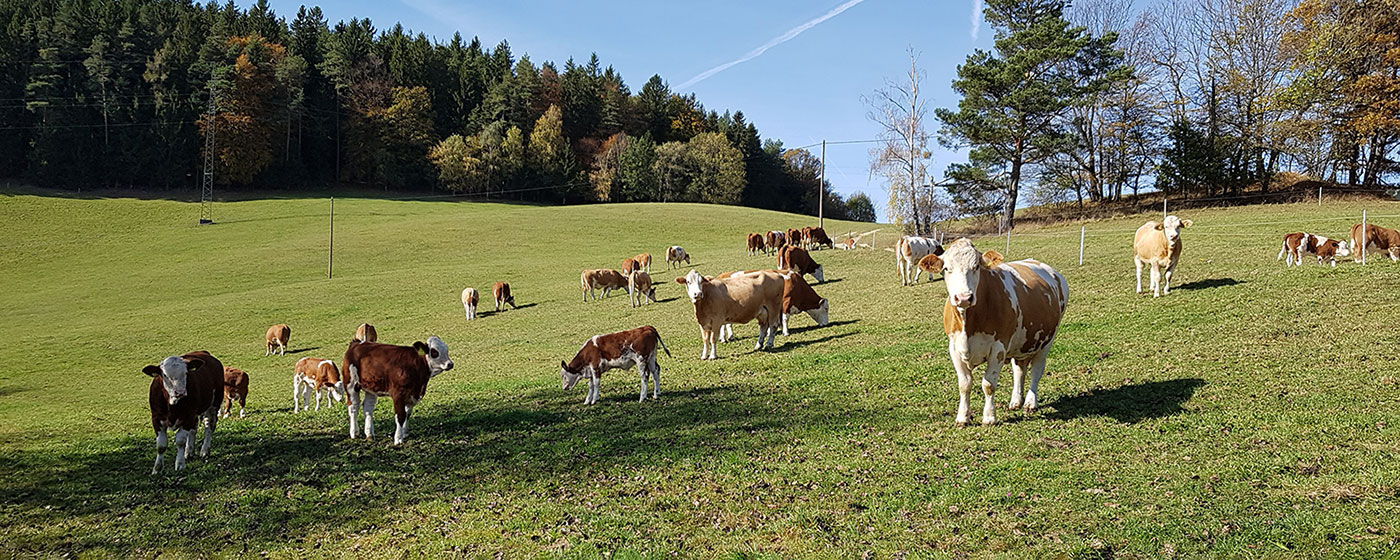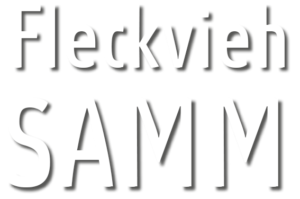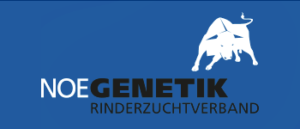Herkules & Susi
The basis of today’s cattle herd was a Fleckvieh dual-purpose herd from the late 1980s, which was shaped by sires of the Lower Austrian Fleckvieh breed. The Herkules-daughter Susi, born on 26th of Mai 1988, seems to be particularly worth mentioning.
Susi stood in the middle frame, had correct foundations and a high sitting udder with a deep thigh udder base.
Susi convinced by the quality of her weaned calves.
Sire Herkules had a lasting influence on the Simmental population in Great Britain and Ireland.
The offspring & the first hornless calf
Through Susi’s offspring, especially the Ho-daughter Venus and the Ironheart-daughter Save, her genes were widely spread in the herd.
The first genetically hornless calf was born in November 1991, the beginning of hornless breeding on the farm. The sire of the female calf was the American Simmental sire Leggacy Return.
Influence from Bavaria
Due to veterinary regulations and differences in breeding objectives, the hornless gene was integrated into the herd by using bulls of the Bavarian E-, H- and P-line. The insemination bulls Emperor PP, Eisenherz PP, Horn PP, Pikant PP and Gorm PP deserve special mention.
The last horned suckler cow left the herd in September 2002. In order to compensate for the weaknesses of individual hornless sires and to use valuable genes of the large horned dual-purpose population, selected dual-purpose sires have been used since 1998 on hornless cows that carry the possibility of homozygosity at the P locus.
Great diversity of sires
Although the weighting of the trait complexes is different in the breeding objective of dual purpose than in suckler cow husbandry, with a herdbook cow population of more than one million cows in Austria and Germany and a wide range of variation, there are definitely valuable genes in the dual purpose population that are also desirable in suckler cow husbandry.
In addition, some insemination bulls from the Simmental polulation are also used, provided they meet the breeding objective.



